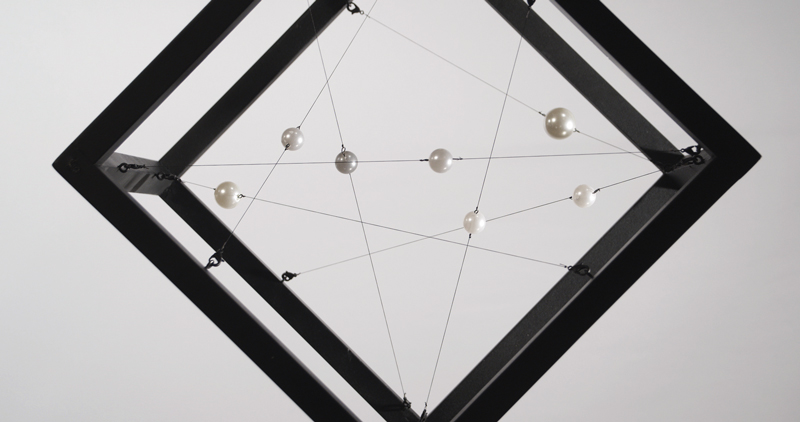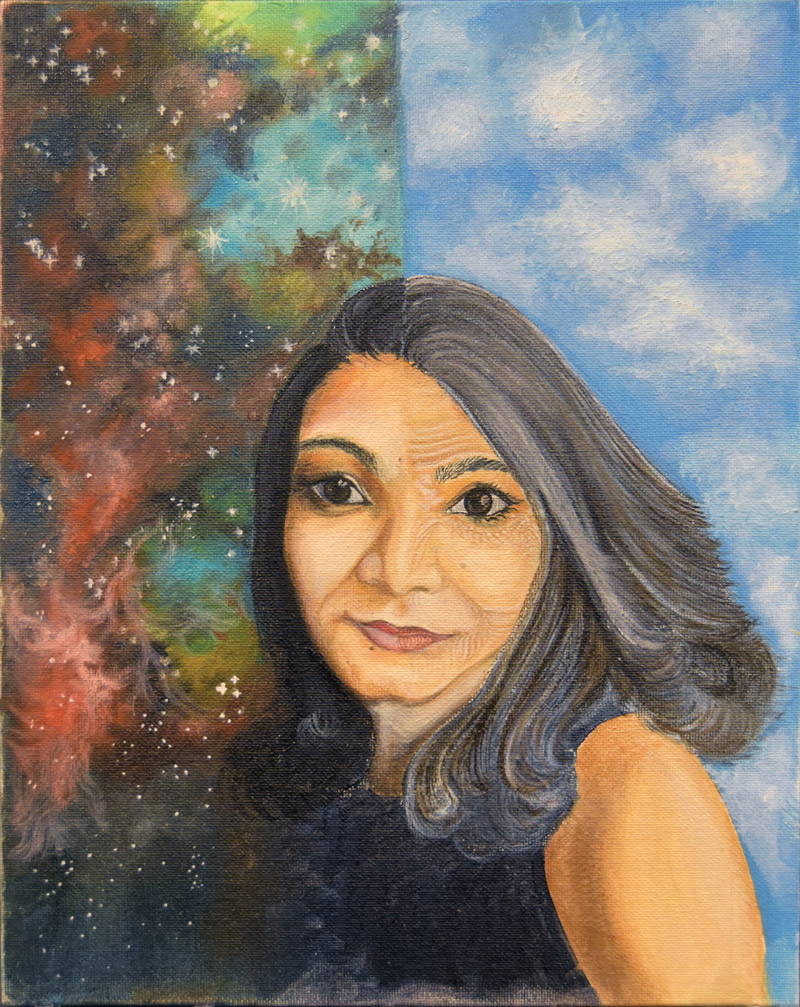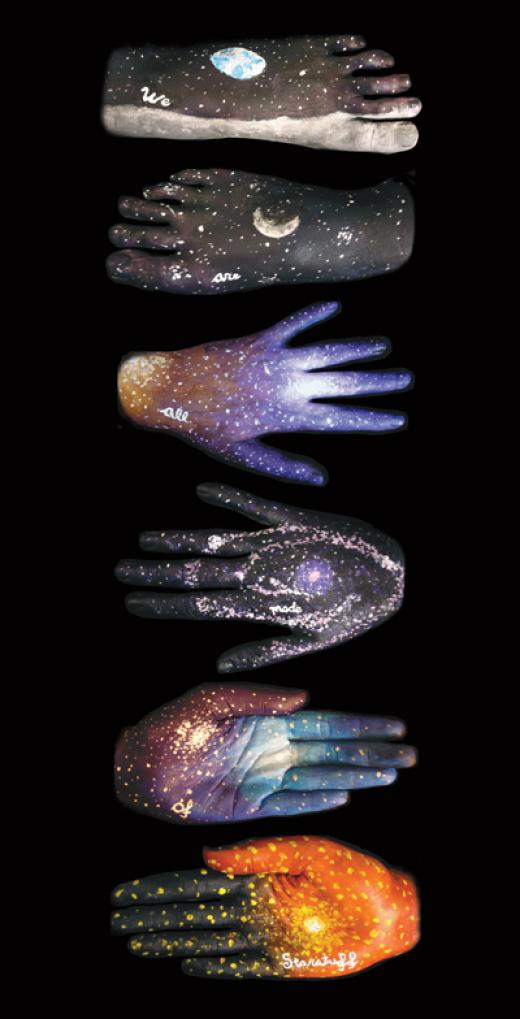PhysCon OSA Art Award Winners
Spring
2017
Special Feature
PhysCon 2016
PhysCon OSA Art Award Winners
The Optical Society Foundation (OSAF) generously funded the OSA Art Awards

Best in Show & People’s Choice: Caroline Bowen,
University of Tennessee, Knoxville, for Asterism
Asterism depicts the seven stars of the Big Dipper as they are positioned relative to each other in space, suspended in place by metal rods anchored to the edges of a cube. While the distances between the stars are shown to scale, their sizes are not. When viewed head-on from the front, designated by a dot on the top left corner of the cube face, they form the Big Dipper as it is seen from Earth, but as the viewer walks around the sculpture, the familiar pattern quickly dissolves into a seemingly random configuration. The flat black metal frame emphasizes how, as physicists, we view and quantify nature through a lens of rigid, unnatural human constructs like bounding boxes and coordinate systems. This is in stark contrast to stars themselves, which are inherently organic objects with messy births and deaths, finite lifetimes, and unique chemical compositions. For this reason, I chose to represent them as wooden beads that have been stained white (with a subtle hint of each individual star’s color), allowing the wood grain to show through and give them a suitably organic texture.

General Science: Sachithra Weerasooriya,
Midwestern State University, for Self Paradox
Since the beginning of mankind, we have always sought to stay young by improving healthcare. But is there any other way for us to be young? Suppose I travel to a distant planet at the speed of light and then turn around 180 degrees and come back to Earth. Time in my frame would tick slower compared to earth’s frame of reference. Hence, I would be much younger than someone who never travelled to space. This piece of art contrasts and compares myself as one who has travelled through space to someone who has not, thus reflecting the twin paradox.
Sachithra Weerasooriya is double majoring in physics and math, and hopes to graduate in 2018. She has always enjoyed painting, especially painting portraits in oil. “I think that Science is also a form of art. It requires imagination, creativity, and passion,” she says.

Unifying Fields (mixed media): Jordan Rice,
Carthage College, for We are all made of starstuff
In this piece, I wanted to bring together science and art in a way that would symbolize the Earth’s place in the universe. At a deep level, I believe that all humans know that the Earth is but a small piece in a much larger universe, but need to be reminded of exactly where we are and where we came from. By bringing together multiple aspects of art (painting and photography), I wanted to convey this to every person.
Jordan Rice will graduate in May with a physics major and math minor. She started studying art in elementary school and focused on pottery and painting in high school. She sees art and science as two sides of the same coin. “Even though we technically use different parts of the brain for each area of study, science involves creativity just as much as art involves logical thinking,” she says.
